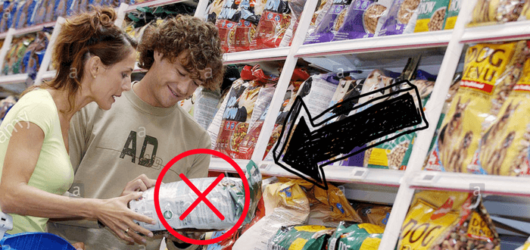Why Kibble is Bad for Dogs? Here are 9 reasons why you should stay away from kibble (of course there is high-quality kibble, we are talking about low-quality kibble).
Kibble is the most used dog food for dog owners. It goes way back to the 1860s when The brainchild of James Spratt, an electrician, and salesman from Cincinnati, crumbled, baked, and transformed a biscuit into a tasty treat for dogs.
Do All Kibble Manufacturers Mention what’s on the Ingredient List?
Fortunately, industrialized dog food labeling is regulated at two levels, so pet food manufacturers are obliged by law to mention what is used to make this pet food.
The federal regulations, enforced by the United States Food and Drug Administration (FDA), establish standards applicable for all animal feeds: proper identification of the product, net quantity statement, manufacturer’s name, and address, and proper listing of ingredients.
Some states also enforce their own labeling regulations. Many states have adopted the model pet food regulations established by the Association of American Feed Control Officials (AAFCO).
These regulations are more specific in nature, covering aspects of labeling such as the product name, the guaranteed analysis, the nutritional adequacy statement, feeding directions, and calorie statements. Read more Here
What to Consider when Buying any Dry Dog Food
what to consider when buying dog food
It can be challenging to read pet food ingredient lists and try to figure out what is included and most dog owners do not read the ingredient list because it sounds complicated, however, they should!
- An ingredient list is required to display all ingredients from most to least by weight. The biggest contributors are first and the smallest is last.
- Think of ingredients as major and minor.
– a. Major ingredients will be the first few listed. Most will bear recognizable animal or plant names.
-b. Minor ingredients are mostly ingredients that supply minerals, vitamins and other nutrients. They may include a few recognizable names but many will be “chemical-sounding.”
Though they are cooked in the process of manufacturing pet food to destroy any harmful bacteria, some ingredients are labeled as raw products.
What Exactly Is Animal Digest?
According to the Association of American Feed Control Officials (AAFCO), “Animal digest – A material which results from chemical and/or enzymatic hydrolysis of clean and undecomposed animal tissue.
The animal tissues used shall be exclusive of hair, horns, teeth, hooves, and feathers, except in such trace amounts as might occur unavoidably in good factory practice and shall be suitable for animal feed.
According to one major dog food manufacturer ”Animal Digest” is made from high-quality protein and fat material derived from animal tissues.
Through an enzymatic process, the large protein pieces in the tissues are reduced to smaller peptides and amino acids. Likewise, the fat particles are broken into smaller lipids and fatty acids.
As the enzymatic reaction progresses, tissues liquefy. This liquid digest is then sprayed evenly on the outside of the dry-food kibbles. This is called “enrobing.”
What are Cheap Dog Food “Fillers”?
Used in low quality, cheap commercial dog foods, fillers are basically put in the dog’s “food” to save the manufacturer money, not to increase nutritional values. Included are products that are not edible and difficult for our pets to digest such as:
- cereal byproducts,
- cottonseed hulls,
- crushed peanut shells,
- straw,
- corn and crushed corncobs,
- weeds, and
- feathers.
A cheap dog food filled with corn fillers, listed as corn, cornmeal, and corn gluten meal should be avoided as this is used as a substitute for higher-quality animal protein sources.
How do Fillers make kibble bad for dogs?
Fillers that are used are not just tasteless but actually can hurt your pet as they cause digestive problems and horrible allergies. They can cause digestive problems, allergies, and immune-deficient puppies or older pets can cause severe medical problems.
What is a By-Product?
Found in cheap dog food, meat by-products are euphemisms for parts of animals that wouldn’t be considered edible by any smart consumer. Meat by-products actually do not contain meat.
By-products are part of the animals that are left over after the meat has been stripped away from the bone. Thrown into the cheap dog food stew pot then would be items such as heads, feet, entrails, hoofs, entrails, lungs, spleen, kidneys, brains, stomach, bones, blood, intestines, and lots of other parts of the carcass not fit for human consumption.
Also, the boiled-down flesh of roadkill, zoo animals, and 4-D (dead, diseased, disabled, dying) livestock is considered okay with these manufacturers. This also can include dogs and cats that have been euthanized.
Avoid dog food with blood meals, which is an inexpensive protein booster. The animal source is usually not stated, and the blood can be contaminated with residues of hormones, or medications.
What is a Non-Specific Meat Source?
If the main protein source is listed as “meat” this is to be avoided, It is always mystery meat such as:
-
spoiled rotten meat from the grocery store (Styrofoam wrap and all),
-
Roadkill that can’t be buried on the roadside,
-
heads, feet, skin, hair, feathers, carpal, and tarsal joints, and mammary glands are used from the slaughterhouses.
Animals that have died from diseases, cancerous tissue, and all, – tumors and worm-infested organs are also rendered. Injection sites are rendered, blood clots and all. Stomach and unclean bowels are rendered.
Contaminated material including blood is rendered. Carcasses with high levels of drugs or pesticides in excess of limits prescribed under the FDA (not fit for human consumption) are rendered.
Everything is pitched into large vats and slowly ground, then cooked at low temps till the grease rises to the top. And consider that this is what is listed on the ingredient list as “animal fat”.
The rest of what is remaining is then pressed until the moisture is completely removed, and this dry raw material that is referred to as “meat”, is then used in the cheap dog food brands.
All the above will harm your dog in one way or another, that’s what makes kibble bad for dogs
Why are Artificial Colors, Preservatives, and Flavors Used?
The flavor is added because most pets wouldn’t eat the finished product without some sort of cover-up for the horrible smell. These additional flavors are usually from rancid restaurant grease. This grease sometimes sits in dumpsters, out in the sun for weeks. This is what the pet food manufacturers buy to add as flavoring, which is sprayed onto the kibble. Also, sugar or corn syrup is used to cover up the bad taste of the inferior kibble.
Different dyes are used to make the food look good to us, the pet owner. Dyes are known carcinogenic causing additives, and I’m quite certain my pet, or yours, does not care what color their food is.
Artificial preservatives are used to extend the shelf life of dog food. The main ones to avoid are
-
BHA (butylated hydroxytoluene),
-
propyl gallate,
-
propylene glycol (also used in automotive antifreeze, and is suspected of causing red blood cell damage)
-
and ethoxyquin.
These are all potential cancer-causing agents that your pets are eating every day, and that is how kibble is bad for dogs
This all sounds pretty grim, but rest assured there are many extremely excellent, ultra-premium organic dog foods now being manufactured without any of the above crap in them.
These highly reputable and conscientious companies have philosophies aimed at providing you and your pet the best of the best when it comes to nutrition and peace of mind. Check some of our Top Dog food brands according to consumer ratings, and our special best diabetic dog food & best puppy food brands for 2017
A lot of pet owners are also now making their own all-natural dog food at home, and this is always better than the junk the commercial pet food manufacturers are feeding our pets.
It is easy, and comparable in price to buying the premium organic dog food brands, as long as you use a proper nutritionally balanced dog food recipe.
Whatever you choose for your pet, remember we speak for them , and choose the best for them that you are able to give, preferably Raw. If you are thinking about switching to raw, check our Ultimate guide to raw feeding post, it will be very helpful.
, and choose the best for them that you are able to give, preferably Raw. If you are thinking about switching to raw, check our Ultimate guide to raw feeding post, it will be very helpful.


